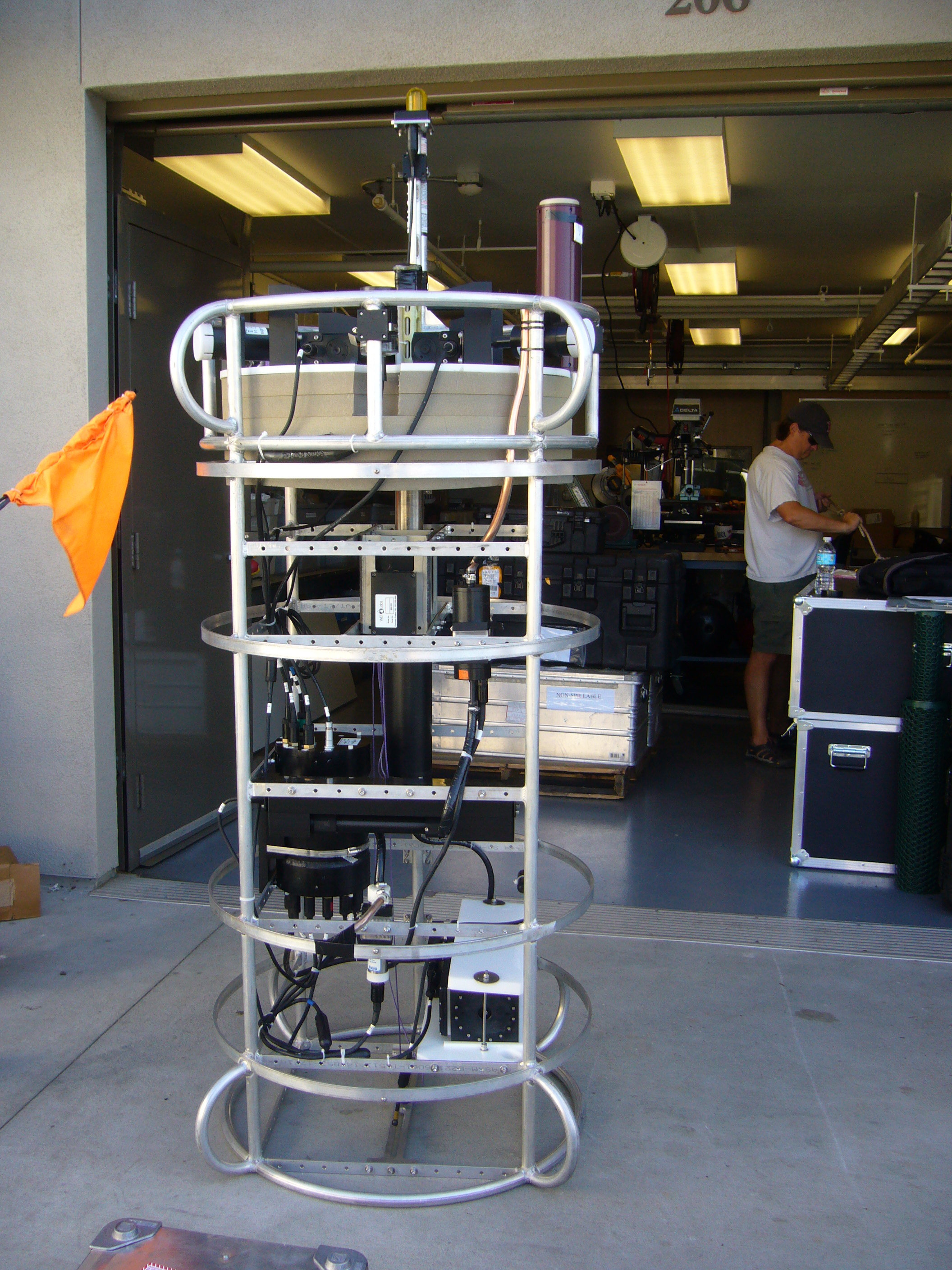WET Labs to Provide Coastal Surface Piercing Profilers
The National Science Foundation (NSF) funded Ocean Observatories Initiative (OOI) announces the signing of a contract with WET Labs of Philomath, Oregon, for the development and construction of uncabled coastal surface-piercing profilers.
Oregon State University (OSU), an OOI implementing organization, will administer the contract. The profiler is an instrumented buoy anchored to the seafloor and able to sample the water column vertically from as deep as 100m depth to the surface. The scientific package includes sensors for physical, chemical, and biological characterization of the near-surface region of coastal oceans. Profilers will be deployed at sites in the OOI Endurance Array off Washington and Oregon and at sites in the OOI Pioneer Array in the mid-Atlantic Bight south of Cape Cod, Massachusetts.
The profiler ascends from the bottom (where it is safe from sea surface hazards) to the surface at programmed intervals. As it ascends, it gathers scientific data at high vertical resolution (<25cm between samples). These data will help fill in the space between fixed sensors located on OOI’s adjacent surface moorings. At the surface, the profiler telemeters its data to shore and can accept commands, and then uses an onboard winch to lower itself to the seabed. Commands from shore allow alteration of the sampling activities to optimize scientific return within power and bandwidth constraints. New capabilities for OOI include enabling the profiler to communicate acoustically with nearby OOI surface moorings while submerged. Protection of the profiler from harsh sea conditions can be accomplished either by acoustic communication to stay submerged or by onboard engineering sensors that can curtail profiles in progress.
The WET Labs Autonomous Moored Profiler (AMP) is a self-contained and self-powered scientific, engineering, and telemetry package that is the product of more than a decade of development. Deployment and recovery of the profiler can be accomplished with a small vessel that has an A-frame. Deployments are planned to last six months, with the potential for mid-deployment replacement of batteries and cleaning of optical sensors. More information, including results from a 95-day deployment for the Office of Naval Research, is available on the WET Labs website. OSU professor and OOI participant Ed Dever notes, “Long term profiling data from this system will help us address important questions about coastal ocean circulation and ecosystem function. For example, when and how do low oxygen conditions develop and over what depths are they a problem?”
The OOI, a project funded by the National Science Foundation (NSF), is planned as a networked infrastructure of science-driven sensor systems to measure the physical, chemical, geological and biological variables in the ocean and seafloor. As a fully integrated observatory, OOI will collect and disseminate data on coastal, regional and global scales. Through a unique cyberinfrastructure, OOI will make ocean observing data available to anyone with an internet connection. Greater knowledge of the ocean’s interrelated systems is vital for increased understanding of their effects on biodiversity, ocean and coastal ecosystems, environmental health, and climate.
The OOI Program is managed and coordinated by the OOI Program Office at the Consortium for Ocean Leadership in Washington, D.C., and is responsible for construction and initial operations of the OOI network. Five Implementing Organizations are responsible for construction and development of the overall program. (1) Woods Hole Oceanographic Institution and Scripps Institution of Oceanography are responsible for the Pioneer and Global Arrays, including their moorings and autonomous vehicles. (2) Oregon State University is responsible for the Endurance Array moorings and autonomous vehicles. (3) The University of Washington is responsible for cabled seafloor systems and moorings. (4) The University of California, San Diego, is implementing the cyberinfrastructure component. (5) Rutgers, the State University of New Jersey, is responsible for the education and public engagement software infrastructure.
About the Consortium for Ocean Leadership
The Consortium for Ocean Leadership is a Washington, D.C.-based nonprofit organization that represents 99 of the leading public and private ocean research and education institutions, aquaria and industry with the mission to advance research, education and sound ocean policy. The organization also manages ocean research and education programs in areas of scientific ocean drilling, ocean observing, ocean exploration, and ocean partnerships.

